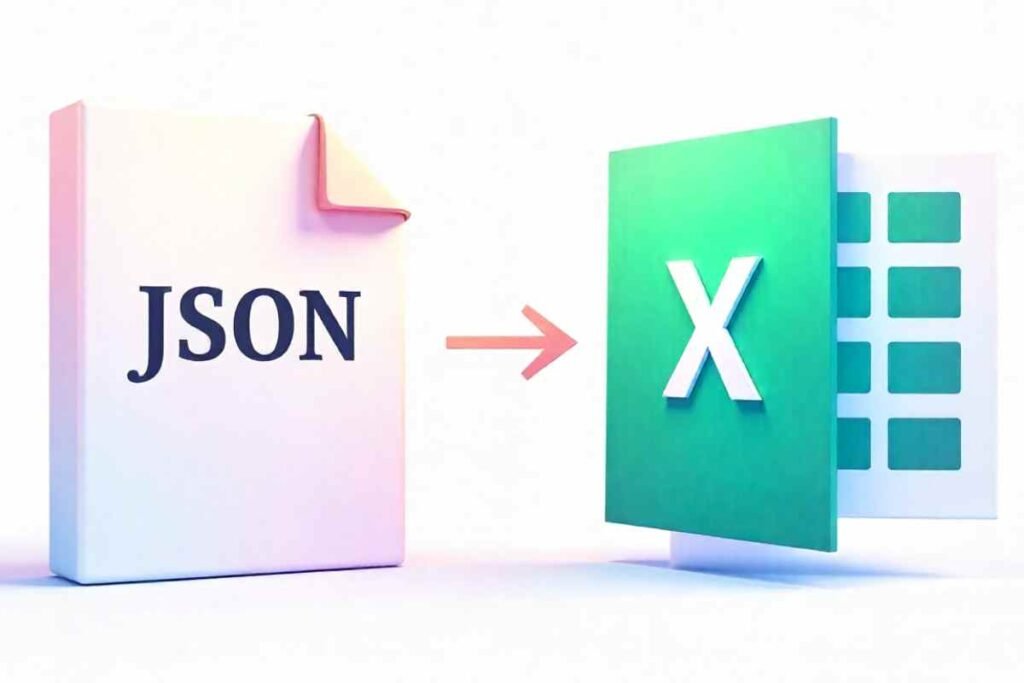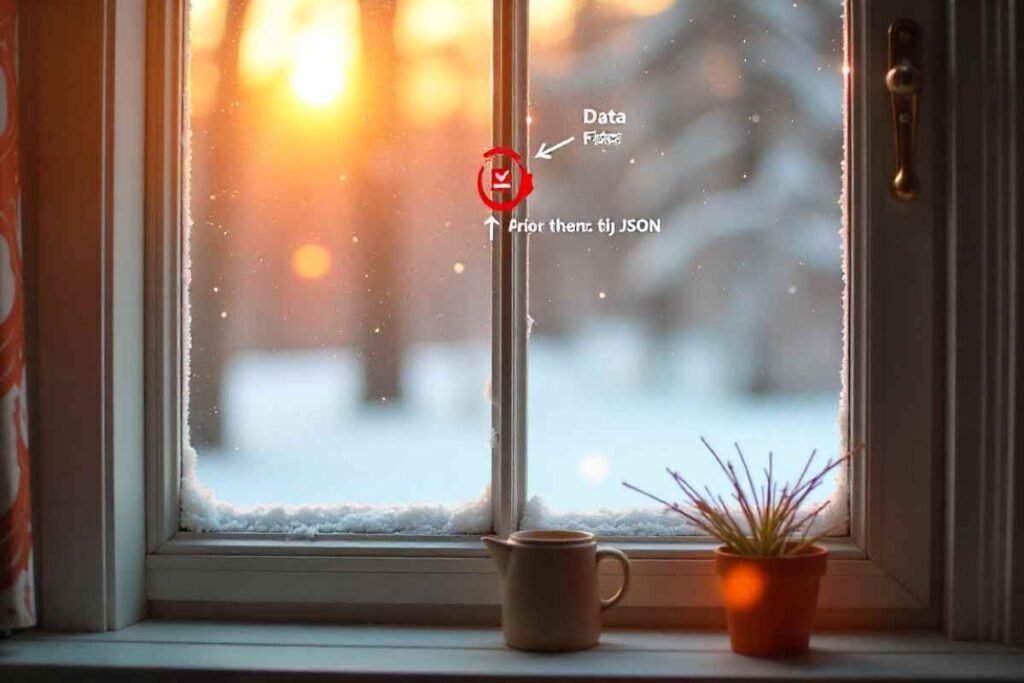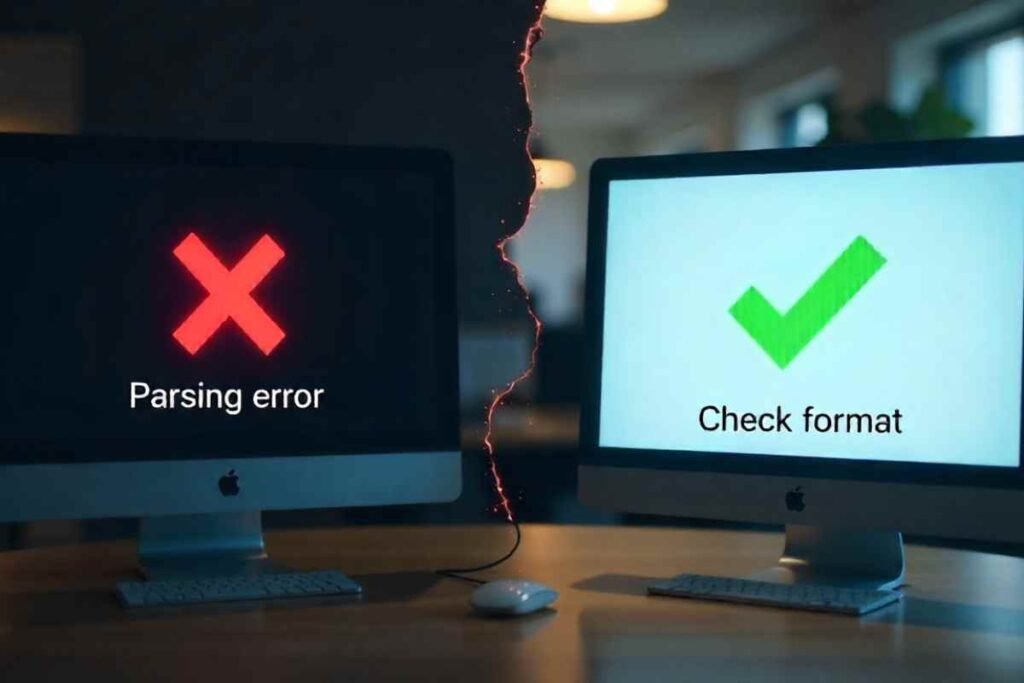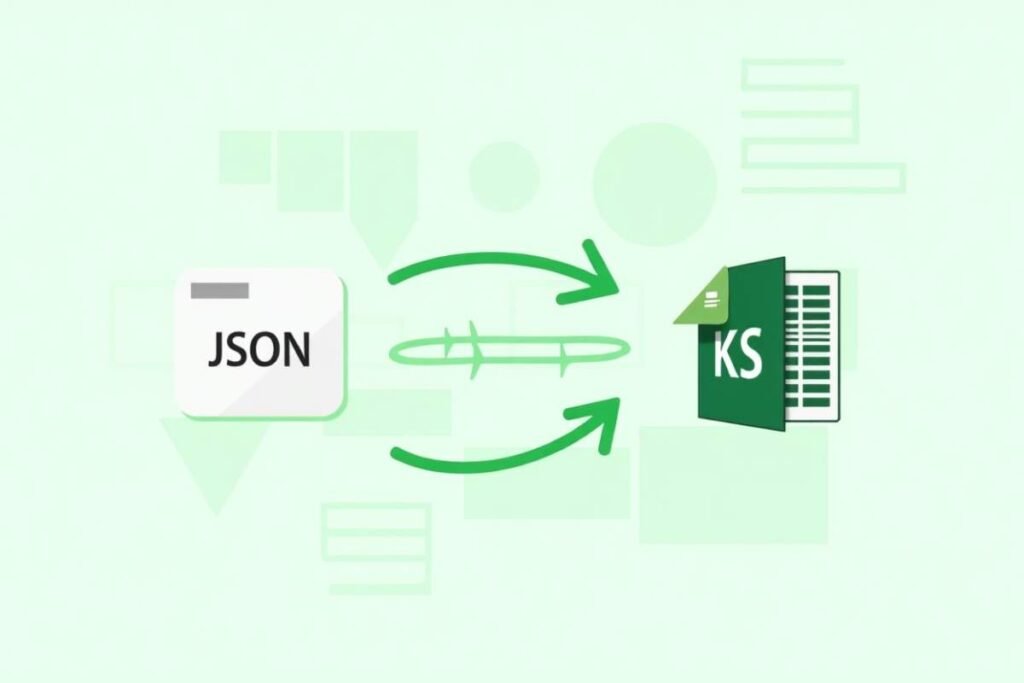How to convert JSON to Excel is a question many beginners ask when working with data files from APIs, websites, or apps. JSON (JavaScript Object Notation) is a popular format for storing data but it’s not easy to read or analyze without some technical skills.
That’s why converting JSON to Excel is so useful. Excel makes the data easier to understand filter and organize. In this beginner friendly guide we’ll show you simple methods step by step so anyone can convert JSON to Excel without confusion.
What Is JSON and Why Convert It to Excel?

JSON (JavaScript Object Notation) is a lightweight format used for storing and transporting data. It is commonly used in web applications APIs and databases. However JSON isn’t easy to read without technical knowledge.
Excel on the other hand is user friendly and visually organized. It lets you sort, filter, and analyze data easily. That’s why learning how to convert JSON to Excel is useful especially for beginners.
Why Should You Convert JSON to Excel?
How to Convert JSON to Excel is useful for developers but it can look confusing to non-technical users. On the other hand, Excel is visual, organized and easier to understand. By converting JSON to Excel you make the data more readable allowing you to sort filter and analyze it. This is especially helpful when creating reports or sharing information with people who aren’t comfortable with code.
When Should You Use Coding Instead of Tools?
If your JSON file is large contains many nested levels, or needs to be converted frequently using a programming language like How to Convert JSON to Excel is the best option. Writing a script to automate the conversion not only saves time but also ensures consistency. Tools are great for quick jobs but coding gives you flexibility and control especially when integrating with APIs or processing multiple files.
How to Convert JSON to Excel Using Python?
For users familiar with coding How to Convert JSON to Excel offers powerful options to handle large or complex JSON data. With the help of the pandas library, you can read JSON files, transform them into data tables, and export the results to Excel. This method gives you full control and is often used for automation or working with APIs. It might require some practice, but it’s worth learning if you deal with data often.
How to Convert JSON to Excel Using Built-in Excel Features?
One of the easiest ways to How to Convert JSON to Excel is by using Excel’s built in Get & Transform tool. This feature allows in-depth-tutorials-and-guides/ you to import a JSON file directly into Excel and turn it into a readable table. Just go to the Data tab, choose Get Data > From File > From JSON and select your file. Excel will automatically create a structured table using Power Query. This method is perfect for beginners who already have Microsoft Excel installed.
How to Convert JSON to Excel Using Microsoft Excel?

Open Excel
Start Microsoft Excel on your computer. Make sure you’re using Excel 2016 or later as older versions may not support JSON import.
Use the Get & Transform Feature
- Click on the Data tab.
- Choose “Get Data” > From File > From JSON.
- Navigate to your JSON file and select it.
Load the Data
Excel will open the Power Query Editor.
- Click To Table in the ribbon.
- Then click Close & Load to import the data into your sheet.
And that’s it! You’ve now successfully converted your JSON data to Excel.
LSI Keywords Used: JSON file Excel import Power Query Excel sheet
Best Practices Before Converting JSON to Excel
Before starting the process of how to convert JSON to Excel, always make sure your JSON file is clean and valid. Remove any unnecessary white spaces or comments check for proper syntax and ensure the data is structured in key-value pairs. Also it helps to know whether your data is simple (flat) or nested as this affects which method you should use Excel online tools or coding.
Convert JSON to Excel Online No Software Needed
If you don’t have Excel or prefer a quicker way, you can use free online tools.
Top Online Tools
- ConvertCSV – Fast and simple.
- JSON-CSV.com – Great for batch conversion.
- CodeBeautify – Also shows preview.
Steps
- Open any of the tools above.
- Copy and paste your JSON data or upload the file.
- Click the Convert button.
- Download the resulting Excel or CSV file.
These tools are handy for small tasks or quick conversions.
Pro Tip: Always double check the converted file for errors or misaligned data.
Can Google Sheets Help You Convert JSON to Excel?
Yes Google Sheets can also be used to How to Convert JSON to Excel into a spreadsheet format. By using add-ons like Import JSON or writing a small Google Apps Script, you can load JSON data directly into your Google Sheet. Once the data is loaded, you can download the file as an Excel document. This method is useful when you don’t have Excel installed or prefer working in the cloud.
Pros and Cons of Each Method
| Method | Pros | Cons |
|---|---|---|
| Microsoft Excel | Easy, built-in tool | Requires latest Excel version |
| Online Tools | No install, fast | Privacy concerns |
| Python | Great for big data | Requires coding knowledge |
| Google Sheets | Accessible, cloud-based | May need add-ons or scripts |
Tips to Clean and Format JSON Data
Before converting, your JSON must be:
- Properly structured with keys and values
- Free of missing brackets or commas
- Flattened if nested
Use JSONLint to check and fix formatting errors.
Real Life Example API to Excel Report
Let’s say you get weather data in JSON from an API. You can:
- Use Python to fetch and parse the JSON.
- Normalize and write it to Excel.
- Share the Excel report with your team.
This turns raw data into actionable insights.
Common Errors and Fixes

| Error | Fix |
| JSON parsing error | Use JSONLint |
| Excel not loading JSON | Check version or file format |
| Data not structured correctly | Flatten JSON using json_normalize() |
Conclusion
Learning how to convert JSON to Excel opens the door to better understanding and managing your data. Whether you’re using Microsoft Excel an online tool Python or Google Sheets each method has its own benefits depending on your needs and comfort level.
Now that you know multiple ways to handle JSON files, you can easily turn raw data into organized readable spreadsheets. Start with the method that feels easiest to you and practice a few times soon converting JSON to Excel will feel like second nature.
FAQs
What is the easiest way to convert JSON to Excel?
Using Microsoft Excel’s built in “Get & Transform” feature is the easiest for most users.
Are online converters safe to use?
Most are safe but avoid uploading sensitive data. Use trusted tools like ConvertCSV.
Can I convert JSON to Excel without software?
Yes use free online converters or Google Sheets with add-ons.
What if my JSON file is too large?
Use Python for better performance and handling.
Can I automate the conversion process?
Yes. Python scripts combined with task schedulers can automate conversions daily or weekly.


